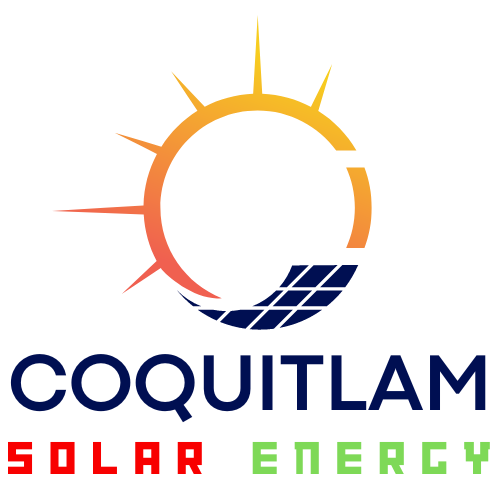Hidden Costs of Solar Installation and How to Avoid Them
A solar panel installation at home is a great start for long-term savings and energy independence. More and more people and companies are switching to renewable energy sources in an effort to lower their electricity bills.
Yet, despite the obvious advantages of solar power, many people fail to consider the potential hidden expenses that may affect their investment.
Our experts at Coquitlam Solar Energy believe in being completely upfront with our customers about everything, from the hardware prices to other factors involved in the final value of an installation.
Key Takeaways:
- Soft costs make up 64% of the expenses, including permitting, labour, and marketing.
- End-of-life recycling expenditure can be high if infrastructure is lacking.
- Transparent pricing matters. Choose installers who provide clear cost breakdowns.
Soft Costs as the Overlooked Expenses
Much more than the hardware price, soft costs make up 64% of the overall cost of the installation. Permitting, labour, supply chain issues, and marketing are all examples of these non-hardware prices.
Despite the falling prices of hardware, the complexity of administrative, logistical, and regulatory processes keeps soft costs high. The SunShot Initiative, run by the US Department of Energy, breaks down how these non-monetary expenses affect the total cost of panels.
Permit Fees (2%)
Separate zoning fees, building permits, and electrical permits are required by the British Columbia authorities. Prices and specific requirements for these permits can differ based on the size and scope of your project.
- A professional installer can provide you with an estimate, including any fees and permits that may be required. With this, the overall expenditure will be easier to see.
Permitting, Installation, and Interconnection Labour (2%)
Aside from acquiring the necessary permits, completing paperwork, system design, and utility interconnection necessitate skilled labour.
- There are fees involved when connecting a system to the grid, and these fees can vary from one utility company to another.
- Poorly managed interconnection processes can extend project timelines.
- Streamlining these processes through standardized regulations helps reduce expenditures.
Sales Tax (5%)
Sales tax can be imposed on panels, inverters, batteries, and other equipment. British Columbia imposes a Provincial Sales Tax (PST) of 7% on the purchase or lease price of goods and services.
But the good news is that solar PV systems, thermal panels, wiring, controllers, and other related equipment are exempt from PST as an incentive to encourage the adoption of green energy.
Note that import duties can still contribute to the overall tax burden when purchasing from international suppliers.
Transaction Costs (5%)
- Homeowners and businesses seeking loans or power purchase agreements (PPAs) may incur loan origination fees and interest payments.
- Legal contracts, warranty processing, and insurance requirements also add to transaction costs.
Installer/Developer Profit (9%)
Like any business, residential and commercial solar panel companies include a profit margin in their pricing. Established businesses may command a premium rate because of the reliability and prestige of their brand. Because of this, it is more important to look for a trustworthy provider to make sure you get your money's value.
Indirect Corporate Costs (9%)
- These include office expenditures, insurance, employee salaries, and business overhead.
- Marketing, research and development, and professional training programs contribute to indirect expenses.
- Companies that invest in advanced training for their staff tend to offer better-quality installations but may charge higher prices.
Customer Acquisition (9%)
Customer acquisition is expensive for businesses in Canada due to the country's competitive market. Although some rely on word-of-mouth referrals and community programs, these efforts still cost a business. Expenses include:
- advertising
- lead generation
- customer consultations
Installation Labour (11%)
Among the highest expenses is hiring a professional to set up the panels, inverters, and wiring. Only highly trained professionals should install, wire, and adjust panels to guarantee their safety and optimal performance. Depending on how many solar panels there are, the complexity of the project, and regional wage disparities are some of the factors that can affect labour rates.
Supply Chain Costs (12%)
- Refers to logistics, shipping, and material handling.
- Price fluctuations in raw materials (silicon, aluminum, copper) affect the cost of panels and electrical components.
- Raw material shortages, transportation delays, and trade tariffs are all global supply chain disruptions that can cause prices to rise.
Consider the recent news on the tariffs that Canada hit on products imported from China. The tariffs can reach as high as 286%. These can drive up the price of Chinese units, which are cheap because of government subsidies, driving up the cost of
solar power systems in Canada as a whole. These tariffs are put in place to support and shield domestic producers.
The Hidden Costs of Solar Systems’ End-of-Life Management
After a panel's expected 25 to 30-year lifespan, one of the most underestimated parts of the installation process becomes apparent. The disposal and recycling expenses can add up quickly. PV recycling presents two possible financial scenarios:
Scenario A: Small or No Recycling Fees
- The PV units last 25-30 years before reaching the end-of-life stage.
- There are negligible prices for dismantling and logistics.
- Ample recycling capacity is available with minor costs.
- The resale of recovered materials generates significant revenue.
Scenario B: Insufficient Recycling Fees
- The PV installation reaches the end-of-life stage much sooner than 25-30 years.
- Due to capacity shortages, dismantling, logistics, and recycling become expensive
- Insufficient recycling capacity requires panel storage, which increases expenditure.
- Lack of urban mining technology and resources leads to lesser profitability.
- The question "Who will pay the rest?" highlights the financial burden of this scenario.
To make sense, insufficient recycling capacity raises expenditures and complicates logistics, like Scenario B. Funding end-of-life care is a major issue. The question
"Who will pay the rest?" in Scenario B shows the financial risk of low recycling fees. It stresses appropriate recycling and disposal to recover valuable resources. Meanwhile, Scenario A illustrates how high recycling prices might boost recycling efficiency and material revenue.
How to Avoid Hidden Costs
Choose Installers with Transparent Pricing
- Research and Reviews. Start by finding local installers you trust. Look for companies with positive customer reviews, like Coquitlam Solar Energy.
- Request Detailed Quotes. A transparent company provides a comprehensive breakdown of all expenses, including equipment, installation, permits, and any additional fees.
- Understand the Components. Familiarize yourself with the basic components.
- Ask for a Timeline. This should cover everything from obtaining permits to the final inspection. A clear timeline avoids unexpected delays and charges.
- Read the Fine Print. Check for any stipulations that could lead to unexpected expenses. If anything is unclear, don’t hesitate to ask for clarification.
Extra Steps You Should Consider
| Streamline Permitting and Inspection | Support policies that reduce administrative burdens and standardize approvals. |
| Leverage Tax Incentives | Research rebates, grants, tax credits, and sell excess solar energy system output to lower expenses. British Columbia offers a lot of renewable energy incentives to promote sustainable energy. |
| Reduce Customer Acquisition Costs | Opt for community programs or bulk purchasing to lower marketing expenses. |
| Extend Panel Lifespan | Proper maintenance, cleaning, and inverter upgrades can prevent premature failures. |

Making Solar Energy Production Truly Cost-Effective
PV panels are a great sustainable energy investment, but hidden expenses can hurt ROI. Maximize returns on your investment by understanding soft costs, planning for end-of-life recycling, and hiring reliable installers. If you’re installing a sun-powered system, work with Coquitlam Solar Energy. We provide transparent pricing and long-term support to ensure your unit remains cost-effective for decades.
Frequently Asked Questions
Can unexpected site conditions increase the total cost?
Yes, unexpected site conditions like roof damage, structural reinforcements, or outdated electrical systems can add significant expenses to your project. Before installation, you need a complete site inspection to detect potential concerns.
Are there hidden maintenance costs after installing a solar panel system?
PV panels require minimal maintenance. But birds, squirrels, or rodents can chew through the wiring. Some homeowners invest in pest deterrent solutions to prevent this issue.
Can HOA rules increase how much residential solar panels cost?
Yes, some HOAs have strict regulations regarding panel placement, aesthetics, and installation approvals. Always check with your HOA before committing to a system installation.
CONTACT
Telephone: 604-337-1958
E-mail: info@coquitlamsolarenergy.ca
LOCATION
Coquitlam, BC V3B 0A4, Canada
Coquitlam Solar Energy | All Rights Reserved | 2023
